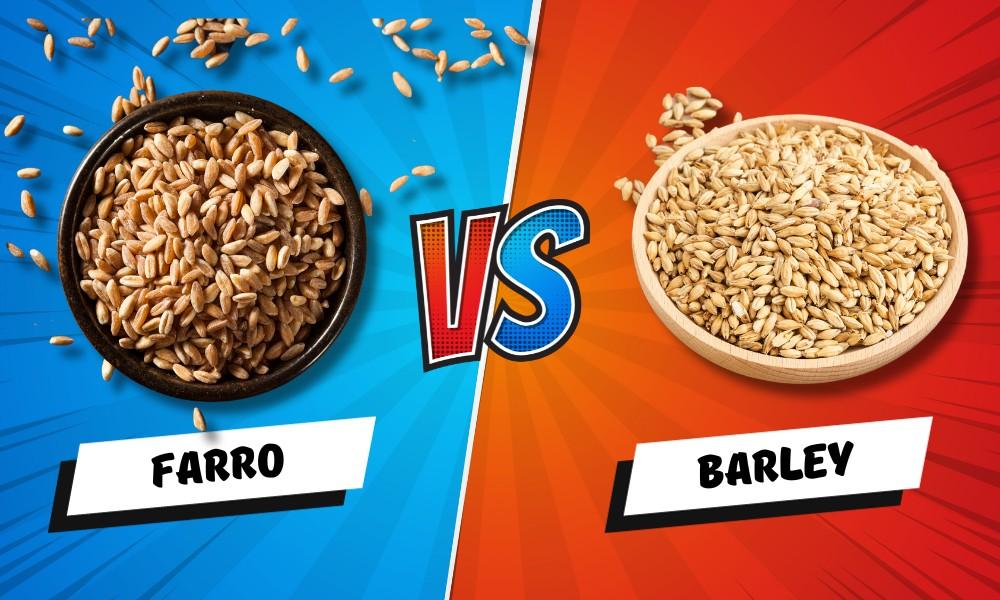Discover the unique tastes and health benefits of farro and barley! Learn how these nutritious ancient grains differ in texture, flavor, and cooking methods. Perfect for adding variety to your healthy meals!
🌾 Unraveling Farro and Barley
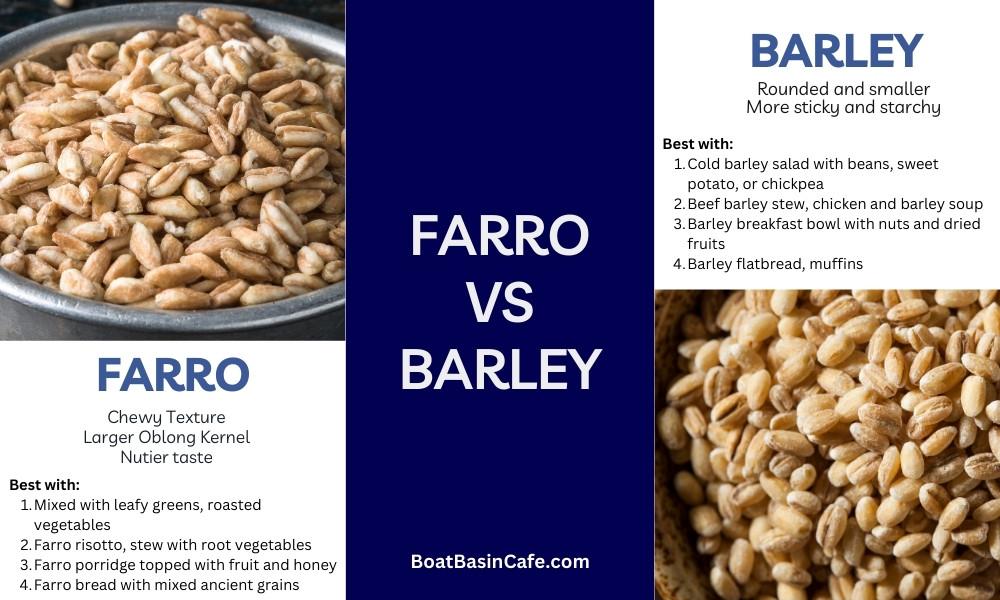
👉🏻 In the rich tapestry of whole grains, farro and barley stand out as two threads with ancient heritage and robust profiles. Farro, known for its hearty, chewy texture, is often mistaken for spelt or wheat berry due to its similar appearance. This venerable grain has been a staple since the days of ancient Egypt, offering a slightly larger, oblong kernel with a firm bite.
👉🏻 Barley, on the other hand, is globally recognized for being one of the first cultivated grains, tracing back thousands of years. Visually, barley is typically more rounded and smaller than farro. When cooked, barley’s texture is notably more sticky and starchy, a characteristic that lends itself well to soups and stews.
✅ Both grains not only share a historical significance but also a nutritional prowess, with high levels of fiber, protein, and a slew of vitamins and minerals. Despite their similarities, they maintain distinct identities—farro with its nuttier taste and barley with its starchy versatility, making them a healthier alternative to carbs like white rice and pasta.
💡 Farm to Table: Sourcing Insights
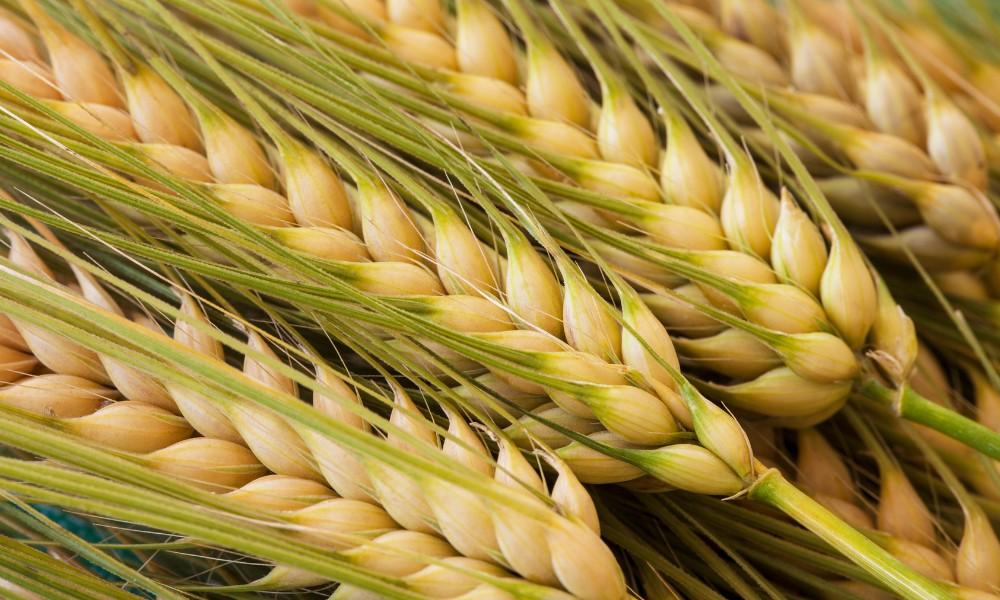
The journey of farro and barley from farm to table encompasses more than just miles—it’s a narrative of cultivation and origin. Farro primarily hails from parts of Europe, especially Italy, where it has been sown for centuries and still features prominently in traditional Italian cooking.
Barley’s cultivation is more widespread, with major production spanning across the continents from Asia to North America. This adaptability hints at barley’s resilience as a crop, capable of growing in a variety of climates. Its history as a source of food, animal feed, and even a key ingredient in brewing beer is testament to its versatility.
The origin of these grains not only influences their culinary uses but also the traditions and techniques of harvesting, which have been refined over generations. The choicest grains are often those grown via organic methods, allowing for a sustainable and environmentally friendly approach to farming—an ethos we valued deeply at the Boat Basin Cafe.
👨🍳 Savor the Flavor: Taste Test
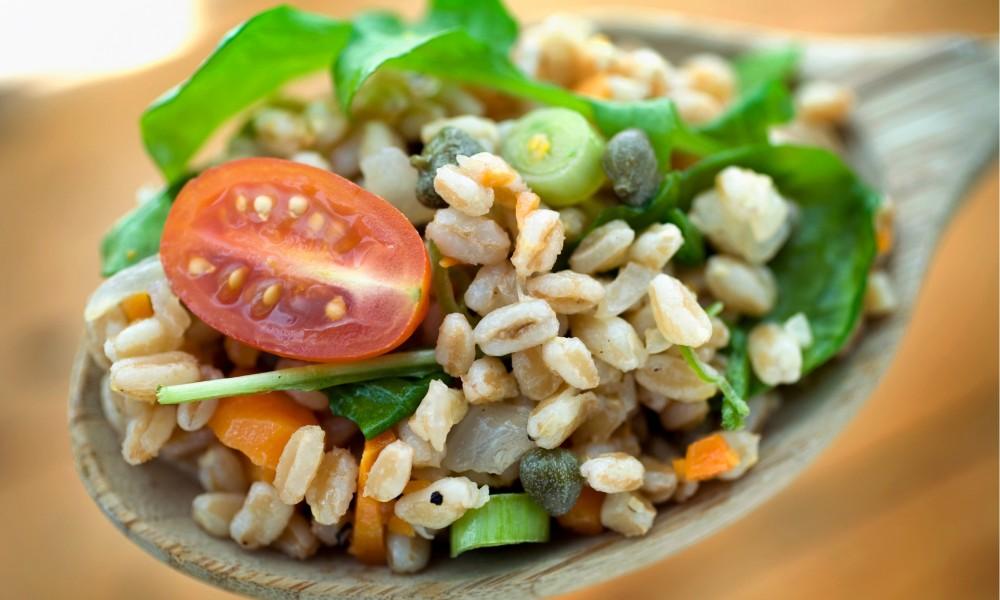
🥗 When it comes to savoring the flavor, farro and barley each bring a unique taste experience to the table. Farro’s earthy undertones are accented by a complex, nutty flavor—a signature profile that has made it a cherished ingredient in Mediterranean cuisine. Its robust nature makes it ideal for salads and as a wholesome base for pilafs and grain bowls.
🥣 Barley’s flavor is milder, with a wonderfully versatile palate that absorbs the essence of the ingredients it’s cooked with. It’s this quality that makes barley a comforting addition to hearty soups and stews, where it can take on the savory notes of broths and seasonings.
😋 Texture and Taste in Depth
The texture of farro and barley varies greatly depending on their preparation. When boiled, farro retains a firm, chewy texture, offering a satisfying bite in every spoonful. This texture complements the grain’s nuttiness, making it a perfect match for robust vegetables and tangy dressings in salads. Steaming farro, on the other hand, softens its texture while preserving its distinct flavor, ideal for lighter, more delicate dishes.
Barley, when boiled, becomes wonderfully tender yet retains a slight chewiness, absorbing flavors like a sponge. This quality makes it a fantastic thickening agent for soups and stews, where it absorbs the rich flavors of the broth. Steamed barley, more subtle in taste, pairs beautifully with herbs and spices, accentuating the nuanced flavors of the dish without overwhelming them.
| Cooking Method | Farro | Barley |
|---|---|---|
| Boiling | Chewy and firm texture, ideal for salads. Nutty flavor enhances robust vegetables and dressings. | Tender with slight chewiness, perfect for soups and stews. Absorbs flavors well, adding body and richness. |
| Steaming | Softer texture, suitable for lighter dishes. Maintains its distinct, nutty flavor. | Subtler in taste, pairs well with herbs and spices. Ideal for delicate flavor profiles. |
📌 A Nutritional Comparison between Barley and Farro will further reveal the subtle but persuasive differences these grains have to offer the discerning diner or health-conscious consumer. Whether incorporated into ancient grain mixes or standing alone, both farro and barley possess a gastronomic heritage ripe for modern exploration.
🪧 Nutrient Scorecard: Farro vs Barley
The debate of Barley vs Farro extends into the arena of nutrition, where both grains flex their rich content of health-promoting nutrients.
✅ Farro, often extolled for its high nutritional value, provides a dense dose of fiber, which aids in digestive health, as well as antioxidants that combat oxidative stress. It contains a remarkable blend of protein, essential for muscle repair and growth, and is a low-glycemic index food, beneficial for blood sugar control.
✅ Barley is no slouch in the nutritional department either. It offers an impressive profile of vitamins and minerals, including selenium, manganese, and niacin. The fiber content in barley, particularly its beta-glucans, has been associated with heart health and lowering cholesterol. Moreover, barley’s fiber contributes to satiety, which can be valuable for weight management.
Nutrition information for 1 cup of cooked grains:
| Nutrient | Farro | Barley |
|---|---|---|
| Calories | 200 | 193 |
| Protein | 8g | 3.5g |
| Fiber | 5g | 6g |
| Fat | 1.5g | 0.7g |
| Iron | 2mg | 2mg |
| Carbohydrates | 37g | 44.3g |
This comparison underscores the choice of farro and barley as healthier alternatives to carbs and positions them as favorable substitutes for traditional grains in a balanced diet. 😊
📌 Kitchen 101: Cooking Techniques
🔓 To truly unlock the potential of these ancient grains, understanding the proper cooking techniques is key. Cooking farro is relatively straightforward, with the pearled variety being the most common and the quickest to prepare. Begin by rinsing the farro under cold water, then bring it to a boil in a pot of water or broth; reduce the heat and simmer until the grain is tender yet chewy, typically around 25 to 30 minutes.
Barley also starts with a good rinse, followed by cooking in a ratio of one part barley to three parts liquid. Pearl barley, with its outer husk removed, cooks more rapidly, requiring about 25 minutes, while hulled barley can take upwards of an hour. Barley is ready when it has absorbed most of the liquid and has a soft yet hearty texture.
| Grain | Rinse | Ratio | Cook Time | Texture When Cooked |
|---|---|---|---|---|
| Farro | Yes | 1:2.5 | 25-30 min | Tender, chewy |
| Barley | Yes | 1:3 | 25-60 min | Soft, hearty |
👨🍳 Equipped with these guidelines, both novices and seasoned cooks can approach farro and barley cooking with confidence, lending culinary expertise to dishes that span global cuisines.
Recipe Remix: Culinary Uses
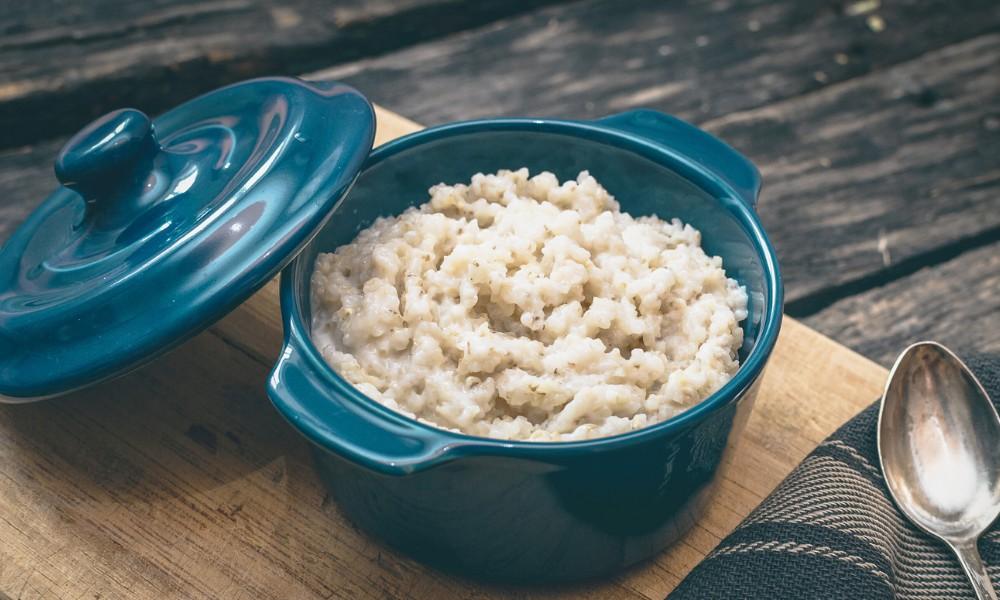
👉🏻 In the hands of a creative cook, farro and barley become versatile stars in a myriad of dishes. Farro shines when featured in salads that celebrate its chewy heft, mixed with greens like kale for a satisfying texture contrast. It also stands up well to robust flavors in pilafs or as a bulkier, healthier substitute for rice in risotto.
✅ Barley’s adaptability allows it to play a supporting or primary role in an array of recipes. From the classic barley soup or stew, where it adds a welcoming thickness, to being an excellent addition to breads and stuffing, barley’s starch content holds and binds ingredients beautifully. It can also be a hearty replacement for oat in a morning porridge.
| Type of Dish | Best with Farro | Best with Barley |
|---|---|---|
| Salads | Mixed with leafy greens, roasted vegetables | Cold barley salad with beans, sweet potato, or chickpea |
| Hearty Meals | Farro risotto, stew with root vegetables | Beef barley stew, chicken and barley soup |
| Breakfast | Farro porridge topped with fruit and honey | Barley breakfast bowl with nuts and dried fruits |
| Baking | Farro bread with mixed ancient grains | Barley flatbread, muffins |
These recipe preparation ideas exemplify how farro and barley can enhance everyday meals, adding depth of nutrition and unique taste to both sweet and savory dishes. 😎
⚠️ Gluten Concerns: Making Informed Choices
For those with gluten sensitivities or on a gluten-free diet, the choice between farro and barley is significant. Both grains contain gluten, which makes them unsuitable for individuals with celiac disease or gluten intolerance. However, with the rising popularity of ancient grains, several gluten-free alternatives, such as quinoa, buckwheat, millet, and rice, offer similar nutritional benefits without the adverse effects on gluten-sensitive individuals.
For those without gluten restrictions, these hearty grains can contribute beneficial nutrients and variety to one’s diet. While they can’t cater to everyone’s dietary needs, they are nourishing options for those who can enjoy them without concern, adding a touch of tradition and nutrition to modern culinary quests.
⏳ Shelf Life: Preserving Your Grains
🗝️ Proper storage is key to maintaining optimal freshness and longevity of grains like farro and barley. Storing them in airtight containers in a cool, dry place away from sunlight will extend their shelf life.
Most whole grains, including farro and barley, can last up to 6 months when stored properly. In the freezer, these grains can last up to a year.
❗️ Checking the nutrition facts label for expiration dates and storing suggestions when purchasing is also recommended to ensure you’re enjoying these grains at their peak quality.
♻️ Environmentally Speaking: Eco Impact
The environmental sustainability of farro versus barley cultivation extends beyond the field to our tables and the planet at large. Both grains are relatively eco-friendly crops, as they require fewer resources like water and fertilizers compared to many other crops. They are frequently used in crop rotation, which is beneficial for soil health, and their robust nature allows them to thrive in various climates, potentially reducing the need for chemical interventions.
👨🍳 As a chef who values both culinary excellence and environmental stewardship, I am encouraged by the prospects of incorporating such sustainable grains into our diets. As consumers become more eco-conscious, choosing grains like farro and barley can be a step toward supporting agricultural practices that align with a healthier environment.
📊 Agricultural and Economic Impact
The cultivation of farro and barley not only contributes to environmental sustainability but also impacts local agriculture and economies. These grains, often grown in smaller-scale farming setups, support sustainable farming practices. This approach to agriculture fosters biodiversity, enhances soil quality, and reduces dependency on synthetic fertilizers and pesticides, contributing to a healthier ecosystem.
In economic terms, the production of farro and barley plays a significant role in local communities, particularly in regions where these grains are staple crops. The cultivation and processing of these grains create employment opportunities and contribute to the local economy. Moreover, as the global demand for healthier, more sustainable food options increases, farro and barley have seen a rise in their market value, thus influencing global trade dynamics. This shift not only benefits farmers but also encourages more eco-friendly and economically sustainable agricultural practices on a larger scale.
FAQs
Navigating the world of ancient grains can raise questions, especially when venturing beyond more familiar grains like wheat and rice. Here, we’ll address some common inquiries about farro and barley.
Is farro and barley the same?
No, farro and barley are not the same. Farro refers to a group of hulled wheat species such as emmer, einkorn, and spelt, while barley is a distinct grain in its own right, separate from wheat. They have different flavors, textures, and culinary uses, although they can sometimes be substituted for one another in recipes.
Which is healthier farro or barley?
Both farro and barley are healthy choices, rich in fiber, protein, and nutrients. Barley has a slightly higher fiber content, which can benefit digestive health and cholesterol levels. Farro offers a more diverse profile of amino acids due to its protein composition. The choice between the two ultimately depends on personal health goals and dietary preferences.
Can farro be substituted for barley?
Yes, farro can be substituted for barley in most recipes and vice versa. They have similar cooking times and textures, although farro tends to be chewier and nuttier in flavor. The substitution typically works best in soups, stews, salads, and grain bowls.
What is farro called in Australia?
In Australia, farro is often referred to as “spelt” especially when the grain sold is of the emmer variety. It can also be labeled as “farro” in specialty or health food stores.
What is the downside of farro?
The downside of farro pertains primarily to its gluten content, which excludes it from the diets of those with gluten sensitivities or celiac disease. Additionally, being a specialty grain, it may also be more expensive or harder to find compared to more common grains like barley.
With a deeper understanding of farro and barley, enthusiasts and connoisseurs alike can make informed decisions and explore the boundless culinary possibilities these ancient grains present. Whether simmered in hearty winter fare or tossed in a vibrant summer salad, farro and barley offer a delicious glimpse into the wholesome sustenance of civilizations past, right here on our modern-day tables.
You might be curious about other grain comparisons, read our related articles below and make informed choices for your next meal!
